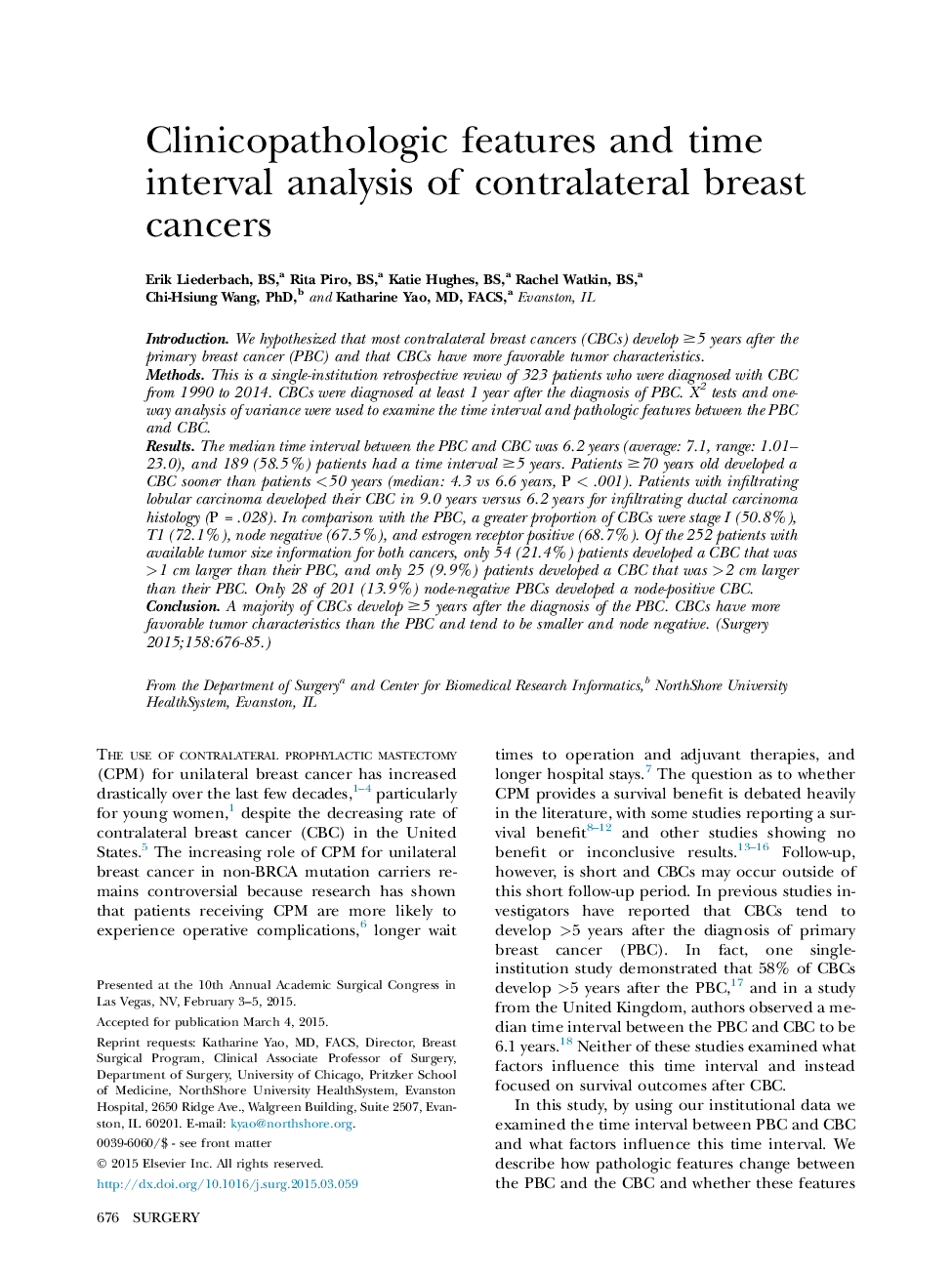| Article ID | Journal | Published Year | Pages | File Type |
|---|---|---|---|---|
| 4306695 | Surgery | 2015 | 10 Pages |
IntroductionWe hypothesized that most contralateral breast cancers (CBCs) develop ≥5 years after the primary breast cancer (PBC) and that CBCs have more favorable tumor characteristics.MethodsThis is a single-institution retrospective review of 323 patients who were diagnosed with CBC from 1990 to 2014. CBCs were diagnosed at least 1 year after the diagnosis of PBC. Χ2 tests and one-way analysis of variance were used to examine the time interval and pathologic features between the PBC and CBC.ResultsThe median time interval between the PBC and CBC was 6.2 years (average: 7.1, range: 1.01–23.0), and 189 (58.5%) patients had a time interval ≥5 years. Patients ≥70 years old developed a CBC sooner than patients <50 years (median: 4.3 vs 6.6 years, P < .001). Patients with infiltrating lobular carcinoma developed their CBC in 9.0 years versus 6.2 years for infiltrating ductal carcinoma histology (P = .028). In comparison with the PBC, a greater proportion of CBCs were stage I (50.8%), T1 (72.1%), node negative (67.5%), and estrogen receptor positive (68.7%). Of the 252 patients with available tumor size information for both cancers, only 54 (21.4%) patients developed a CBC that was >1 cm larger than their PBC, and only 25 (9.9%) patients developed a CBC that was >2 cm larger than their PBC. Only 28 of 201 (13.9%) node-negative PBCs developed a node-positive CBC.ConclusionA majority of CBCs develop ≥5 years after the diagnosis of the PBC. CBCs have more favorable tumor characteristics than the PBC and tend to be smaller and node negative.
